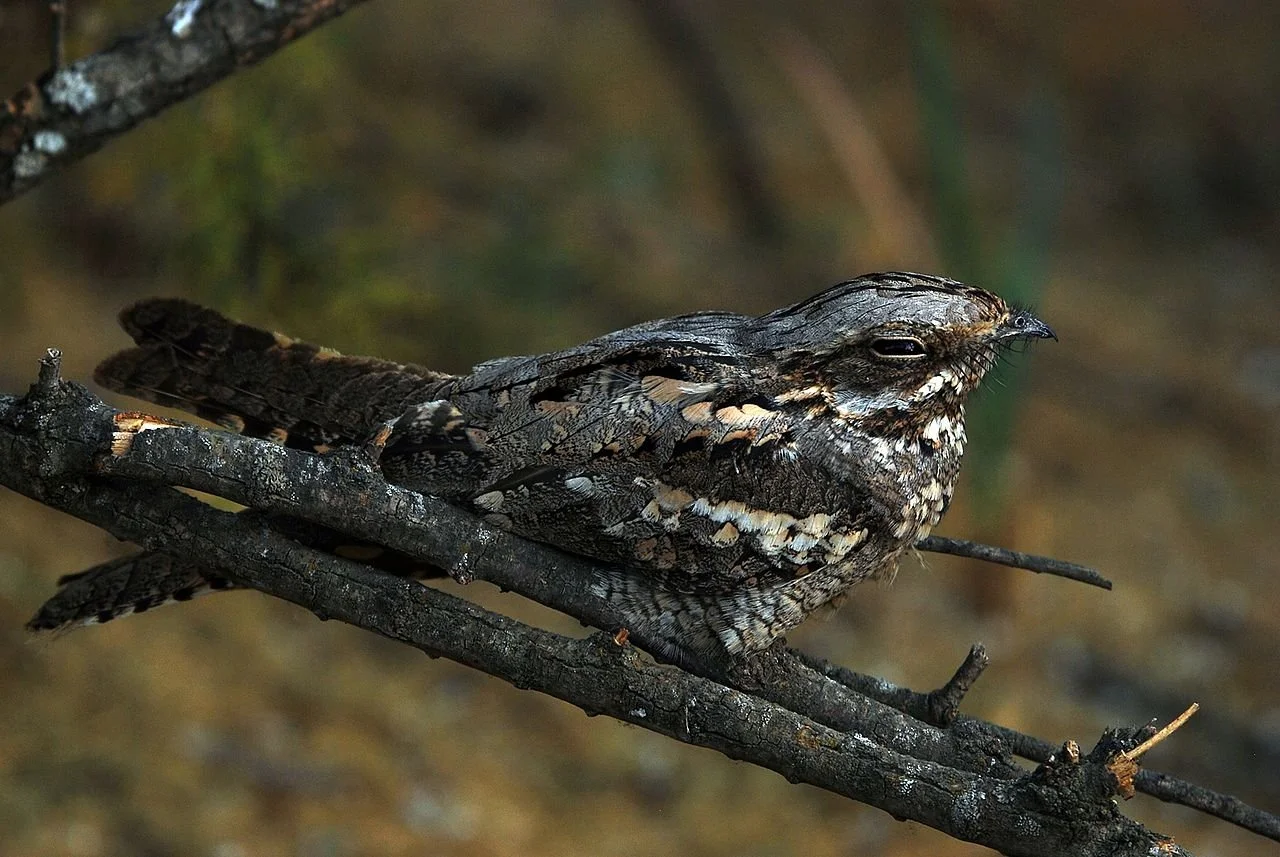Nightjar
Caprimulgus europaeus
Nightjars are supremely weird, and make a sound like no other British bird.
The churring of a Nightjar seems more electricity substation than birdsong, and it’s strangeness is amplified by its timing.
Nightjars rarely start to sing until well after the sun is down, making the sound all the more dislocated and otherworldly.
It’s often accompanied by a couple of other distinctive sounds: one a sharp ke-wick, and the other the sound of its wings being clapped together, which is part of their territorial display.
If the light is still good enough, and they’re not too far away, you may catch some of their quiet, slow-winged flight as they circle around you.
Nightjars need open areas, with extensive ground cover which they hide themselves away in during the day. And they need plenty of moths and other flying insects to feed on at night.
They have very pronounced whiskers to help them locate their prey in the dark, and a mouth that’s extraordinarily wide for a relatively small bird.
They are very occasionally found at rest during the day, when their cryptic plumage allows them to blend into a log or horizontal branch, or simply to disappear among the bracken and heather.
However, for all their ingenuity in remaining unseen by daylight, they have a long season of ‘churring’ in which you can catch their twilight exploits.
Arriving back between late April and mid-May, Nightjars can continue to make dusk on the heath a memorable experience until August.
Image by Dûrzan cîrano via Wikipedia reproduced under Creative Commons licence CC BY-SA 3.0
